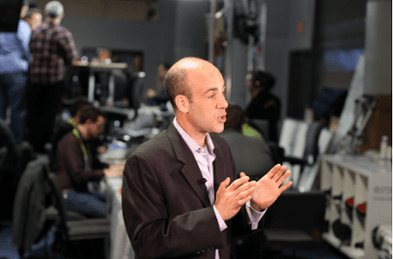5 Tips for Getting Your Media Game Face On

Last quarter, we had the pleasure of hosting two full-day media training sessions for 20 SAP executives, taking us from Walldorf, Germany, to Newtown Square, PA. Nothing beats face time with your clients – and even more fun, when you get to spend some quality time with some of your key spokespeople.
No matter how many times you do it, media training never seems to get old. It melds together some of the coolest parts of the gig: understanding the media and what they (and their audiences) care about; telling your story; and doing it in a way that’s meaningful and memorable. And, of course, learning something new each and every time you do it.
Our participants for the trainings varied – some extremely seasoned and polished spokespeople, and others who are key subject matter experts but haven’t had as many “gos” with the media yet. What’s interesting is that no matter where you fall in the mix, there is always something to take away – whether it’s media fundamentals or fine-tuning a well-oiled machine. We all have room to grow and improve.
Even more interesting are the common questions you hear: the fears, misconceptions or just plain curiosities. I can’t help but liken it to being a parent – the collective sigh of relief when you discover “oh, you worry about that too?” Company brings comfort. Period.
To extend that “company” to you, we’re highlighting our top five tips for getting your media game face on:
1. Understand your audience: You can tell a great story, but if you tell it to the wrong audience, it can fall flat. We’ve all been there. Your tech trade reporters may be more well versed in your technology; have at it with the technical ins and outs. Meantime, the business press is going to care more about the broader implications around what you’re doing – how it underscores an industry shift or trend and how’s it solving a problem for your customers. Knowing how to tell your story in varied shades will help with connecting to your audience – the journalist – and their readers.
2. Tell a story: We are humans, and we are built to remember stories. The most empowering part about your role as a spokesperson is you have an opportunity to tell your story, and to do it in a way that creates an “aha” moment for your audience. Talk about your customers (even if just anecdotally); talk about salient industry data points that support why what you’re doing matters; and talk in terms of analogies. That’s the stuff readers will remember. It’s also the stuff that will get a journalist coming back to the well for more.
3. Take five: There is no one – no matter how seasoned – who doesn’t benefit from five minutes of prep time before an interview. If you’re like most spokespeople, your days are packed with meetings – with your board, your customers and your internal teams. Take a few minutes to allow yourself to switch gears. Read your briefing materials for the details on who you’re about to talk to and why. Then jot down the three most important points you want to make on the call. Keep those notes in front of you to keep them top of mind.
4. It’s OK to say “I don’t know the answer to that”: I repeat: it’s OK to say “I don’t know the answer to that.” Of course you’re being called upon as an expert, but no one has every answer, all the time. Yet, it can be easy to forget this simple fact in these scenarios, because you feel like you’re failing when you say “I don’t know.” In reality, it’s worse to try and make up an answer. If you find yourself in that situation (or fear that situation), know that it’s OK to say “I don’t know the answer to that, but I’m sure I can get it for you.” This is a great opportunity to put your PR firm on the hook to follow up with the answer!
5. Make room to listen: In all of the excitement of our storytelling, we sometimes realize we haven’t given ourselves a second to breathe and listen. Listening to the questions you’re getting from the journalists – the points of clarification they’re asking for, their follow-up questions – can tell you if your story is resonating and if they’re engaged.
To move beyond the Cliff’s Notes version, you can find out more about PAN’s media training here or contact us at info@pancomm.com.
“Media training can be daunting for new spokespeople or deemed unnecessary by more veteran spokespeople in need of a refresher. The PAN team tackles both scenarios with skill and flair; beyond merely delivering expert media training sessions, PAN performs some kind of alchemy that turns these sessions into serious fun. The session they created for SAP Hybris a day prior to our biggest global event in Germany last year helped provide our team with a cadre of on-message and savvy spokespeople. We’re still reaping the rewards!” – Sarah Kellman, Global Vice President of Communications, SAP Hybris
“I learned that it’s not what you know about your company and solutions that matters. It’s knowing how to answer the question that counts. PAN media training taught me to think outside-in. Lead with what’s in it for everyone else.” – Harry Piccariello, CMO, GigaTrust
 Source:
Source: 